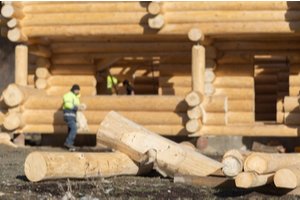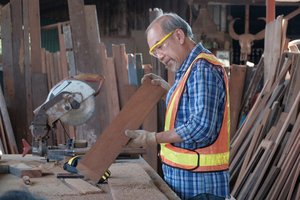Quality Control, even the slightest hint of the subject leads most people to roll their eyes and look for the nearest escape. Consultants and promoters of “quality control” use terms like “total quality management”, “statistical process control”, “continuous process improvement”, “six sigma”, “quality audits”, and, perhaps most importantly, “corrective action”. Terms that seem like they came straight from a United Bureaucrats of the World manual. But, in general, delivering high-quality goods and services for most areas of operations comes down to one fundamental principle: consistency.
Quality Control During The Assessment And Grading Of Timber Products

Quality control in the grading of timbers is critical to ensuring that the products meet the performance expectations of designers and adhere to the grade criteria required of every piece of lumber and engineered wood product. This principle applies to both cosmetic and structural grading. Producers perform mechanical and visual quality checks throughout the production process, and suppliers typically visually inspect all products as they are received. For best results the tests done by the producer are often not the same test done by the supplier. This helps more quality checks are done before the wood is sold to the customer.
Lumber Standards And Policies
Timber mills develop their own quality control procedures and manuals. While not required, the procedures are often developed to align with third-party certification standards such as ISO 9002 or AS 3902. The value of adhering to third-party standard practices and achieving their certification is the the immediate recognition in the marketplace that the mill’s quality control practices have been validated to meet or exceed industry standards.
Further, third-party auditing of standards and policies can be used to issue a quality certification in specific situations. This assures potential buyers that quality assurance processes are in place and working properly.
The grading operation is the principal step that is influenced by quality control measures. The ultimate test of any grading operation’s effectiveness is in-grade testing. There are two different kinds of quality checks performed during in-grade testing: process control and product checking.

Process control ensures that the procedure is done in such a way that consistent quality material is produced. Examples of process control are the training and examination of the graders who visually inspect and grade timber, and for machine stress-grading, calibration checks, inspection, and calibration stick verification.
Product checking examines the output of the process to see whether the product’s attributes are consistent and meet the product’s required specifications. In-grade testing is largely used for this. It detects things that process control could miss, such as fluctuations in raw materials.
Product Inspection: An Important Aspect Of Any Manufacturing Process
All timber goods, including lumber, plywood, glulam, and other manufactured components, are subjected to product checking. A different grading technique might be used for each component. For example, visual grading criteria can be used to inspect the timber as well as machine stress-grading to validate findings or detect errors made during the visual grading process. Depending on the product, using the same timber grading approach for the check as for the production grading may not always work.
Shift testing another quality control measure applied during product inspection. Shift testing is the repeated assessment of one physical attribute of the material produced during each shift. The test is always for the Modulus of Elasticity (MoE), which measures the strength, stiffness and flexibility of the timber or milled product. Frequently measuring MoE and flexural strengths allows for a more thorough examination of the qualities of the mill’s output and helps monitor any slow drift in mill product qualities. If discrepancies in quality are discovered, efforts can be made to remedy the procedures or the equipment that caused the drift.
Visual Grading Inspections
Visual grading is exactly what it sounds like. Each piece is examined and the grade determined by a trained expert. The pieces are categorized by its stiffness, its strength, its patterns and grooves on the wood. This is a traditional practice in the timber and lumber industry that requires training and experience to gain a professional level of competence.
QC For Machine Stress Grading

Machine stress-grading provides a mechanical alternative to traditional visual grading practices. Material is placed in a machine that measures the degree of bending, tension and compression of the material when placed under stress at one or points.
The machine stress-grading methodology requires the inclusion of quality controls for the machine’s operation to ensure that grading is consistent over time and that the relationship between grading parameters and product attributes stays true. These checks may be determined by regularly placing calibration sticks with known qualities into the machine and by conducting destructive tests on output samples of graded lumber.
In-Grade Tests
For the more regularly used structural species, in-grade testing is used to determine the actual strength distributions of graded materials. It entails taking samples of:
- Stocks of commercially accessible wood
- Data that establish the minimum performance standard of the required grade
- Full-sized lengths of commercially available material
In-grade testing is a flexible approach that has gained worldwide support. In different regions of the world, different test procedures and analysis methodologies are employed. The underlying premise, however, stays the same: a very large sample of full-sized commercial wood is taken and tested. The results are compared with known design values for the species or grade of material tested. When designing structures, architects and engineers use the strength values that indicate the weakest part of the strength distribution for the species and grade of material desired for their project.
Learn More From Our Experts
To work with the top quality wholesale lumber supplier, reach out to the expert team at Curtis Lumber and Plywood today.

